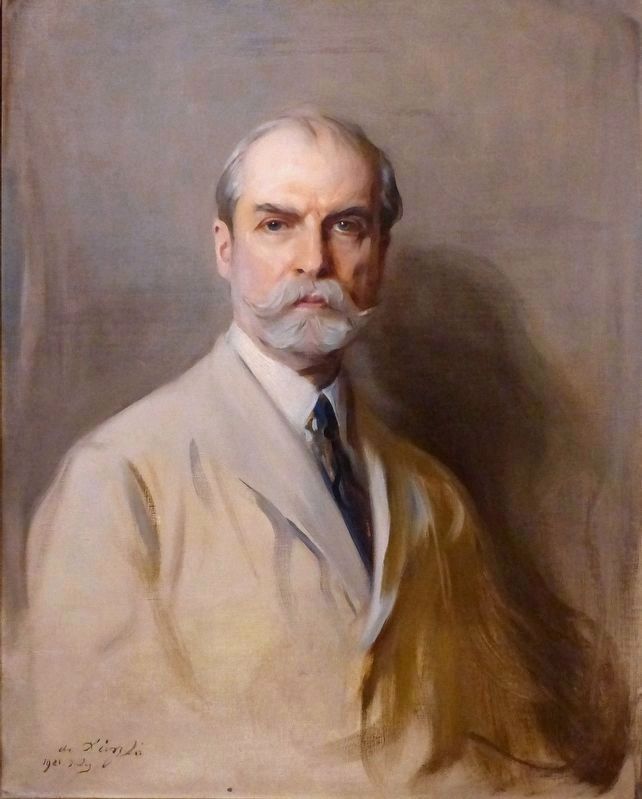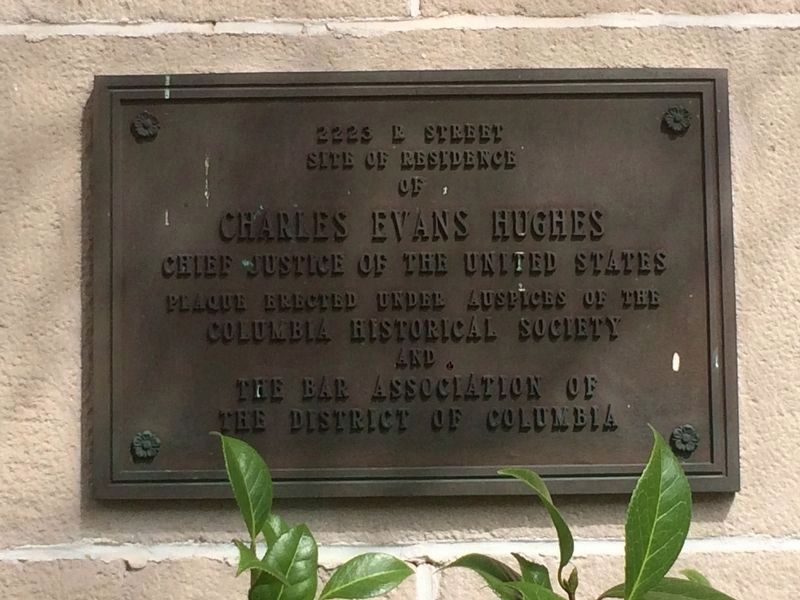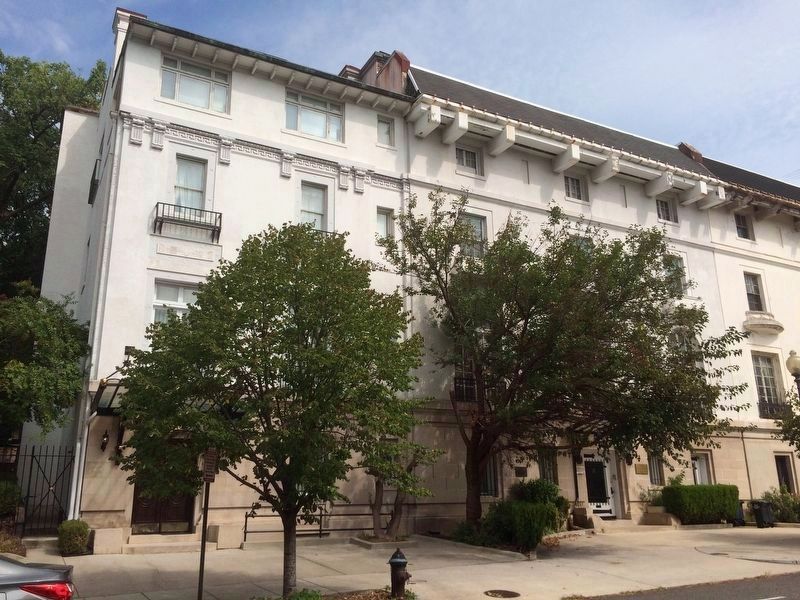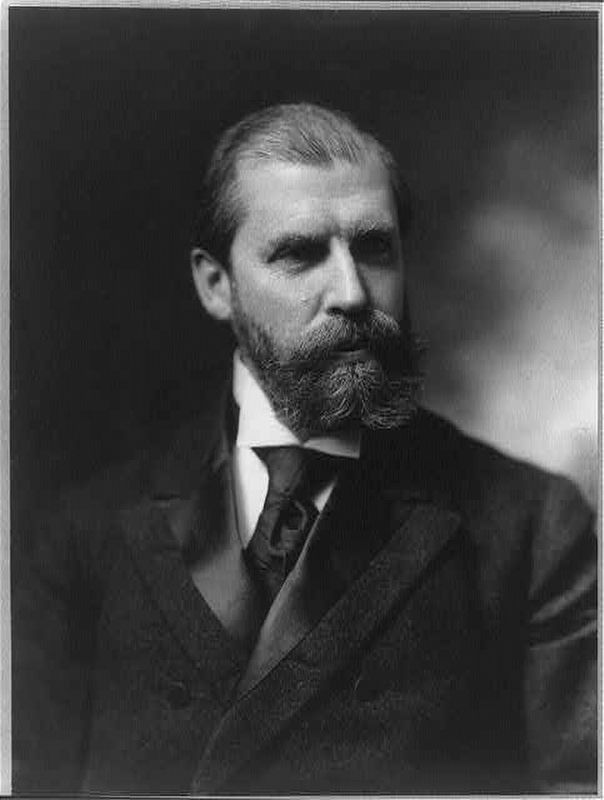Sheridan-Kalorama in Northwest Washington in Washington, District of Columbia — The American Northeast (Mid-Atlantic)
Chief Justice Charles Evans Hughes
Site of Residence
of
Charles Evans Hughes
Chief Justice of the United States
Erected by Columbia Historical Society and The Bar Association of the District of Columbia.
Topics. This historical marker is listed in this topic list: Government & Politics.
Location. 38° 54.764′ N, 77° 2.986′ W. Marker is in Northwest Washington in Washington, District of Columbia. It is in Sheridan-Kalorama. Marker is on R Street Northwest west of 22nd Street Northwest, on the right when traveling west. The building is the Embassy of Myanmar. Touch for map. Marker is at or near this postal address: 2223 R Street Northwest, Washington DC 20008, United States of America. Touch for directions.
Other nearby markers. At least 8 other markers are within walking distance of this marker. Khatchkar Sculpture (a few steps from this marker); The Arts in Sheridan-Kalorama (within shouting distance of this marker); Philippine Ambassador's Residence in the United States (about 300 feet away, measured in a direct line); Eleftherios Venizelos (about 300 feet away); Alberto Santos-Dumont (about 300 feet away); Philip H. Sheridan (about 300 feet away); Vassil Levsky / Васил Левски (about 300 feet away); History of Sheridan-Kalorama (about 400 feet away). Touch for a list and map of all markers in Northwest Washington.
Also see . . . Charles Evans Hughes. Charles Evans Hughes, Sr. (April 11, 1862 – August 27, 1948) was an American statesman, lawyer, and Republican politician from New York. He served as the 36th Governor of New York (1907–1910), Associate Justice of the Supreme Court of the United States (1910–1916), United States Secretary of State (1921–1925), a judge on the Court of International Justice (1928–1930), and the 11th Chief Justice of the United States (1930–1941). He was the Republican nominee in the 1916 U.S. Presidential election, losing narrowly to incumbent President Woodrow Wilson.
Hughes was a professor in the 1890s, a staunch supporter of Britain's New Liberalism, an important leader of the Progressive movement of the 20th century, a leading diplomat and New York lawyer in the days of Harding and Coolidge, and was known for being a swing voter when dealing with cases related to the New Deal in the 1930s. He has been hailed as a leading American conservative. (Submitted on November 3, 2016, by J. Makali Bruton of Accra, Ghana.)

Photographed By Allen C. Browne, November 29, 2015
4. Charles Evans Hughes 1862-1948
This 1921 painting of Charles Evans Hughes by Philip Alexius de László hangs in the National Portrait Gallery in Washington, DC.
“Twice a member of the Supreme Court, Charles Evans Hughes was first appointed an associate justice in 1910 but resigned in 1916 to accept the Republican nomination for president. After his narrow defeat, he returned to private law practice until 1921, when he was named secretary of state in Warren G. Harding's administration. With the Senate's rejection of the Treaty of Versailles the year before, Hughes helped forge a separate treaty with Germany, formally ending the war between the two countries. He also called a conference in Washington for the limitation of international armaments. By the time of his resignation in 1925, Hughes had given greater definition to the Monroe Doctrine and improved the quality of the U.S. Foreign Service. In 1930, Hughes was nominated again to the high court, this time as Chief Justice.” — National Portrait Gallery
“Twice a member of the Supreme Court, Charles Evans Hughes was first appointed an associate justice in 1910 but resigned in 1916 to accept the Republican nomination for president. After his narrow defeat, he returned to private law practice until 1921, when he was named secretary of state in Warren G. Harding's administration. With the Senate's rejection of the Treaty of Versailles the year before, Hughes helped forge a separate treaty with Germany, formally ending the war between the two countries. He also called a conference in Washington for the limitation of international armaments. By the time of his resignation in 1925, Hughes had given greater definition to the Monroe Doctrine and improved the quality of the U.S. Foreign Service. In 1930, Hughes was nominated again to the high court, this time as Chief Justice.” — National Portrait Gallery
Credits. This page was last revised on January 30, 2023. It was originally submitted on November 3, 2016, by J. Makali Bruton of Accra, Ghana. This page has been viewed 461 times since then and 18 times this year. Last updated on November 4, 2016, by Allen C. Browne of Silver Spring, Maryland. Photos: 1, 2, 3. submitted on November 3, 2016, by J. Makali Bruton of Accra, Ghana. 4. submitted on November 4, 2016, by Allen C. Browne of Silver Spring, Maryland. • Bill Pfingsten was the editor who published this page.


